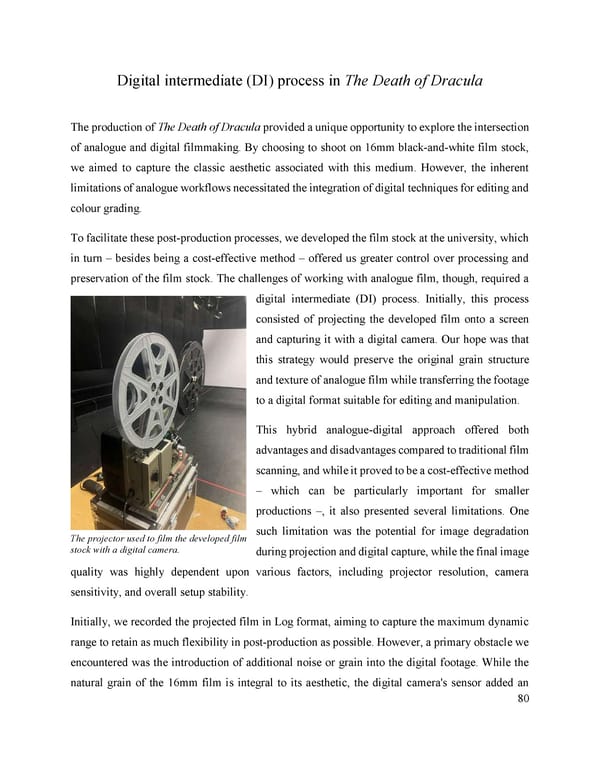Digital intermediate (DI) process in The Death of Dracula The production of The Death of Dracula provided a unique opportunity to explore the intersection of analogue and digital filmmaking. By choosing to shoot on 16mm black-and-white film stock, we aimed to capture the classic aesthetic associated with this medium. However, the inherent limitations of analogue workflows necessitated the integration of digital techniques for editing and colour grading. To facilitate these post-production processes, we developed the film stock at the university, which in turn – besides being a cost-effective method – offered us greater control over processing and preservation of the film stock. The challenges of working with analogue film, though, required a digital intermediate (DI) process. Initially, this process consisted of projecting the developed film onto a screen and capturing it with a digital camera. Our hope was that this strategy would preserve the original grain structure and texture of analogue film while transferring the footage to a digital format suitable for editing and manipulation. This hybrid analogue-digital approach offered both advantages and disadvantages compared to traditional film scanning, and while it proved to be a cost-effective method – which can be particularly important for smaller productions –, it also presented several limitations. One such limitation was the potential for image degradation The projector used to film the developed film stock with a digital camera. during projection and digital capture, while the final image quality was highly dependent upon various factors, including projector resolution, camera sensitivity, and overall setup stability. Initially, we recorded the projected film in Log format, aiming to capture the maximum dynamic range to retain as much flexibility in post-production as possible. However, a primary obstacle we encountered was the introduction of additional noise or grain into the digital footage. While the natural grain of the 16mm film is integral to its aesthetic, the digital camera's sensor added an 80
 Lost Analogue: Exploring Film, Music, and Interdisciplinary Methods in Education Page 80 Page 82
Lost Analogue: Exploring Film, Music, and Interdisciplinary Methods in Education Page 80 Page 82